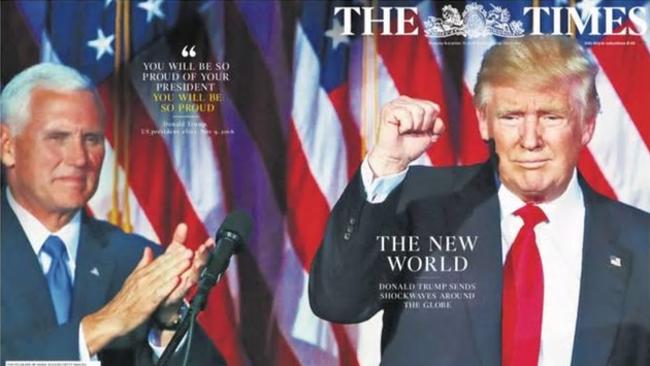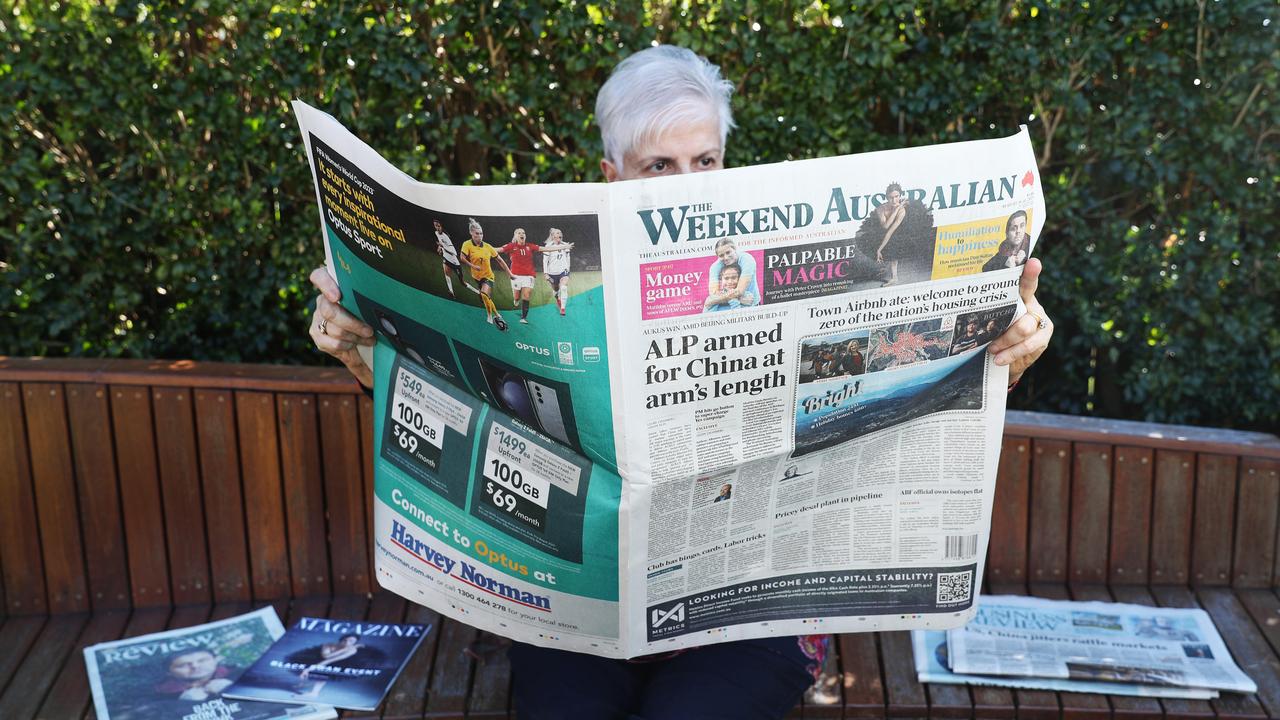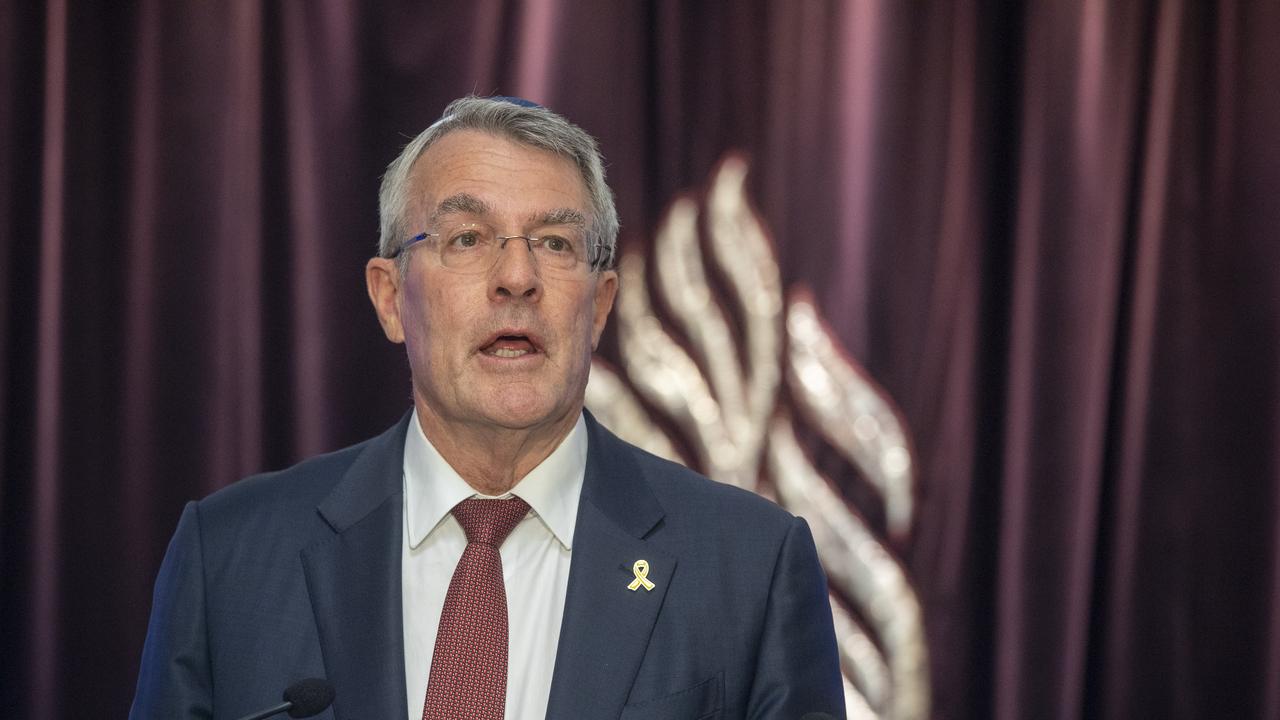Newspaper front pages bloomed as US election night wore on
Most of the world’s newspapers had not spent much time preparing for a Trump victory in the US election.

Elections often see newspaper editors turning the volume up to eleven. And were doing it long before the re-elected US president Harry Truman held up the Chicago Daily Tribune’s November 3, 1948 front page that bellowed “Dewey Defeats Truman”.
Since then, while editors still make noise, they are more risk-averse. That’s why the most popular front page headlines in the early editions of American newspapers last Wednesday were old faithfuls, familiar arrows pulled from quivers full of them: “Cliffhanger” (Chicago Tribune, Florida Today, Lafayette Daily Advertiser and others), “Too Close To Call” (Wilmington News Journal, New London’s The Day, Jackson County Floridian and others), and “It’s Close” and “Too Close” (Fort Myers’ News-Post, Annapolis’s The Capital and New Jersey’s Courier News and many others).
As Donald Trump edged ahead in counting, they read “Trump Leads” — sometimes with an exclamation mark, another indicator of just how wrong much of the media got this. Alongside those were more than a few “Trump Surges”. Lazy? Not really. The evening deadline is a harsh mistress. But these were timeworn. Colorado’s Longmont Times stood out with its “Trump Trending”. An hour later, too many front pages were shouting “Trump Triumphs”. A not-so-cheap alliteration elsewhere was “Trump Towers”.
Most had not spent too much time thinking of a Trump victory, so it was only later editions that carried “You’re Hired”, the Bakersfield Californian neatly, and economically, using “You’re Hired?” in the interim. Presumably the question mark was chipped off later.
Except for New York’s dailies, particularly the New York Post (“Headless Body in Topless Bar”), headline writing in the US is not the venerated art form it has long been in London. The Post’sTrump splash, “Everyone Was Wrong”, was short of its cracker three days earlier: “Mop Secret: Hillary maid handled classified e-mails”.
So it fell to western Europe’s papers — with the luxury of time difference — to trumpet America’s news with some informed spin, with too many unable to resist traditional national prejudices.
There were some striking front pages — not least of the one adorning the Paris daily Liberation. Donald’s Trump’s Photoshopped face hides in the dark while his illuminated hand is presented as a gun. “American Psycho” it scorns.
Germany’s Hamburger Morgenpost has a socialist background, but perhaps there was a mind at work supporting its cynical Trump-bashing. Its front-page illustration had the Statue of Liberty clutching its face as if to say “what have we done?”. The headline read: “A Black Day For The World: America’s Nightmare Election ... ”.
The world’s most famous newspaper showed its class with a stately wraparound front page that still managed an edge of cleverness while playing a straight bat to the news. “The New World” stated The Times of London, adding “Donald Trump Sends Shockwaves Around The Globe”.
London’s The Guardian, a deceitful newspaper with a shameful history of anti-Semitism and reputation for inaccuracy, couldn’t help itself. “Trump wins. Now The World Waits”. That sounded fair enough. But down the page it gave its game away: “Will he destroy America?” the newspaper asked over what appears to be a life-size image of Trump delivering his victory speech. Of course, London’s The Sun trumped them all. Its bold Homer Simpson’s catchphrase “D’Oh!” not only captures the surprise, but plays on the fact that a 16-year-old episode of The Simpsons’ “predicted” a Trump presidency. Homer owns the page standing with a drawn Don.
But no newspaper, not even Fleet Street’s most aggressive mastheads, came anywhere near legendary editor Maxwell Newton’s 1975 election special.
Newton had been launch editor of The Australian in 1964, and a decade later was a newspaper proprietor himself, publishing a mischief-making title: Melbourne’s Sunday Observer. He was erratic and brilliant, made friends and enemies in equal number and enjoyed them both.
And he hated Gough Whitlam. On the election night Malcolm Fraser was swept to power following “The Dismissal”, Newton heartily endorsed chief sub-editor Alan Armsden’s pithy assessment of the national mood.
“Thank Bloody Christ!” the Sunday Observer proclaimed.
Alan Howe is the former editor of The Weekend Australian Magazine, the Sunday Herald Sun, and was previously a senior journalist on the New York Post and The Times and The Sunday Times in London.



